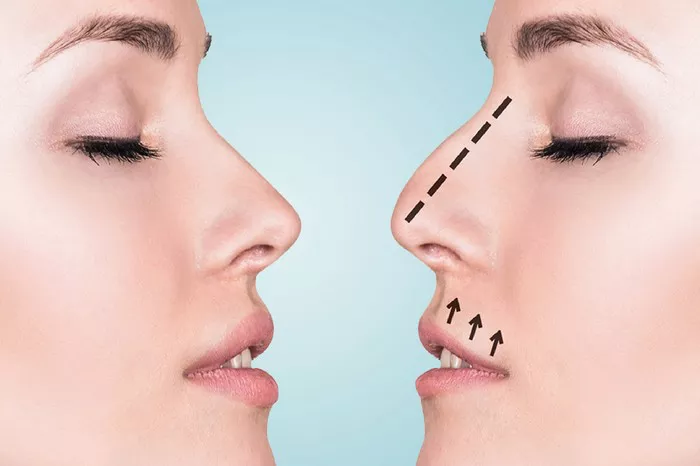Rhinoplasty surgery, also known as a nose job, is a cosmetic procedure that is used to reshape the nose. The procedure can be performed for both aesthetic and functional reasons, such as correcting a deviated septum or improving the appearance of the nose. In this article, we will explore what happens during rhinoplasty surgery, including the preparation, the procedure itself, and the recovery process.
Preparation for Rhinoplasty Surgery
Before undergoing rhinoplasty surgery, patients will typically have a consultation with a plastic surgeon to discuss their goals and expectations for the procedure. The surgeon will also perform a physical examination of the nose and take photographs to help plan the surgery.
In the weeks leading up to the surgery, patients may be advised to avoid certain medications and supplements that can increase the risk of bleeding, such as aspirin and ibuprofen. They may also be advised to stop smoking, as smoking can impair the healing process.
On the day of the surgery, patients will typically be given anesthesia to ensure that they are comfortable and pain-free during the procedure.
The Rhinoplasty Surgery Procedure
The exact details of the rhinoplasty surgery procedure will depend on the patient’s individual needs and goals. However, there are some general steps that are typically involved in the procedure.
Step 1: Incisions
The first step in the rhinoplasty surgery procedure is to make incisions in the nose. These incisions may be made inside the nostrils (closed rhinoplasty) or on the outside of the nose (open rhinoplasty). The surgeon will then lift the skin and soft tissues of the nose to access the underlying bone and cartilage.
Step 2: Reshaping the Nose
Once the underlying structures of the nose are exposed, the surgeon will begin reshaping the nose. This may involve removing or adding bone or cartilage, or adjusting the position of the nasal septum. The goal is to create a nose that is aesthetically pleasing and balanced with the rest of the patient’s facial features.
Step 3: Closing the Incisions
Once the reshaping is complete, the surgeon will close the incisions using sutures or surgical tape. If the incisions were made on the outside of the nose, the surgeon may also place a splint or cast on the nose to help support the new shape and protect it during the healing process.
Recovery from Rhinoplasty Surgery
After the rhinoplasty surgery procedure is complete, patients will typically be monitored in a recovery room until they are awake and alert. They may experience some discomfort, swelling, and bruising in the days and weeks following the procedure, but these symptoms should subside over time.
Patients may be advised to avoid strenuous activities and heavy lifting for several weeks after the surgery to allow the nose to heal properly. They may also need to avoid blowing their nose or wearing glasses or sunglasses that rest on the bridge of the nose for a period of time.
Most patients are able to return to work and other normal activities within a week or two after the surgery. However, it may take several months for the final results of the rhinoplasty surgery to become fully apparent.
Risks and Complications of Rhinoplasty Surgery
Like any surgical procedure, rhinoplasty surgery carries some risks and potential complications. These may include:
Bleeding: Bleeding is a common complication of any surgery, including rhinoplasty surgery. Most cases of bleeding are minor and can be managed with compression and medication. In rare cases, however, bleeding can be more severe and require additional treatment.
Infection: Infection is a risk associated with any surgical procedure. Patients who undergo rhinoplasty surgery are typically prescribed antibiotics to reduce the risk of infection. If an infection does occur, it can typically be treated with antibiotics.
Breathing difficulties: In some cases, rhinoplasty surgery can cause breathing difficulties. This may be due to swelling or a change in the position of the nasal septum. In some cases, additional surgery may be needed to correct these issues.
Unsatisfactory results: While most patients are satisfied with the results of their rhinoplasty surgery, there is a risk that the final results may not meet their expectations. In some cases, additional surgery may be needed to achieve the desired results.
Conclusion
Rhinoplasty surgery is a cosmetic procedure that is used to reshape the nose for both aesthetic and functional reasons. The procedure involves making incisions in the nose, reshaping the underlying structures, and closing the incisions. While there are risks and potential complications associated with rhinoplasty surgery, these are typically minor and can be managed with medication or additional treatment. Patients who are considering rhinoplasty surgery should consult with a qualified plastic surgeon to determine whether the procedure is right for them.

